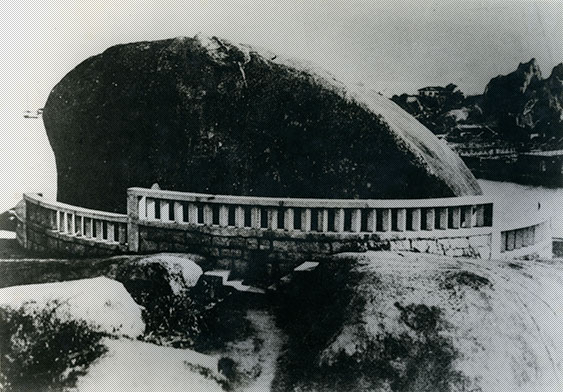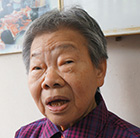
The Ding Dong Boulder as it looked before the Japanese invasion of 1941
Ding Dong Boulder was located next to the Sacred Mountain near Ma Tau Chung Village. Both were eventually leveled during the Japanese occupation of 1941 to 1945 when the authorities needed to expand Hong Kong’s airport. Some of the crushed stone has -Provided by Lee Foo
The Ding Dong Boulder as it looked before the Japanese invasion of 1941
Ding Dong Boulder was located next to the Sacred Mountain near Ma Tau Chung Village. Both were eventually leveled during the Japanese occupation of 1941 to 1945 when the authorities needed to expand Hong Kong’s airport. Some of the crushed stone has -Provided by Lee Foo
Inheriting legends through elders' word of mouth
Hung Gu enjoyed listening to stories told by the senior villagers when she was a child so that she could learn the history of Nga Tsin Wai. The great grandmother of Ng Chin Hung liked mahjong games, but the villagers did not like having games with her because she was harsh and played slowly. To listen to the stories, Hung Gu played the games with her. From the senior villagers in Sha Po Village, she heard the stories about Emperor Bing of Song Dynasty. According to what she heard, the emperor had passed through Nga Tsin Wai in his journey and Sung Wong Toi was built in commemoration of his visit. Originally, Sung Wong Toi was a large piece of round greyish black boulder which the villagers dubbed the ‘Ding Dong Boulder’. The boulder was so named because the boulder would make a nice, tender ‘dong’ sound when knocked by a long bamboo stick. Not everyone who knocked the boulder would make that sound, but Hung Gu could do it. Later on, the the Japanese shattered the Ding Dong Boulder with a bomb. One of the fragments was kept – it is the boulder now erected in the Sung Wong Toi Park.


 BACK
BACK  CLOSE
CLOSE 